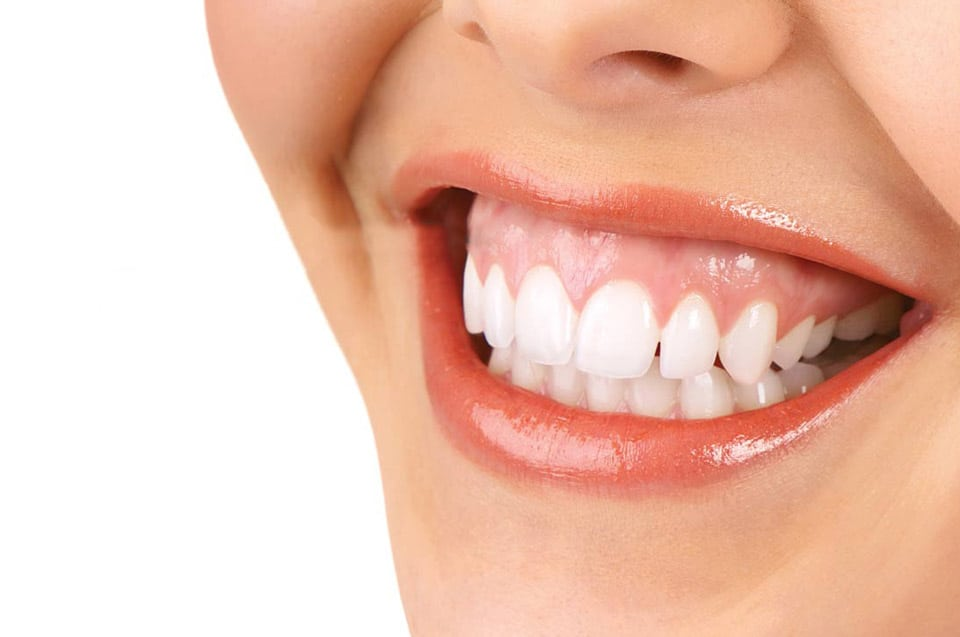What causes Gummy Smile and how can it be fixed?
A gummy smile, also known as excessive gingival display, occurs when a significant portion of the gums is visible when a person smiles. Optimal gingival show on maximum smile can range from 2-3 mm, anything more than that can be considered excess. I always say beauty is in the eye of the beholder, therefore, what I say next is purely clinical. Several factors can contribute to a gummy smile, including:
- Excessive gum tissue: Some individuals naturally have more gum tissue covering their teeth, which can create the appearance of a gummy smile. If you fall under this category, a procedure called gingivectomy (offered at our office) can be done to remove the excess gum and reveal more of the teeth.
- Overactive upper lip muscles/Short upper lip: When the muscles that control the movement of the upper lip are hyperactive, they can cause the upper lip to rise higher than normal, exposing more of the gums. It is also sometimes due to a short upper lip too. It is not hard to imagine that if your upper lip is too short to cover the teeth and gums at rest, your gummy smile may be a result of the inadequate lip length. It is important to consider the length of the upper lip before moving the teeth or jaws to match it. If the rest of the face is normal, changing it to match a short lip may make the face look too short. There are now surgical procedures that can be done to both lengthen the lip and reduce its tonicity (usually by relaxing the associated muscles). There are also other less invasive procedures (like Botox), but these usually provide only temporary results (whereas the surgical procedures are more permanent).
- Teeth eruption: If the teeth do not erupt fully or are improperly positioned, it can lead to an uneven gum line and a gummy smile.
- Jaw development: An abnormal jaw development or an excessive vertical growth of the upper jaw can result in a gummy smile. If the vertical length of your upper jaw is mildly excessive, braces alone or braces with TADS (temporary anchorage devices) may be enough to intrude the long teeth and “tuck” the attached gum tissue back under your upper lip. If the amount of excessive gum displayed due to the elongation of the upper jaw is more than 2mm or 3mm, moving the entire jaw upward may be the only remedy (surgical orthodontics). Again, it is very important that the teeth or jaws are only repositioned if it had been determined that the lips and amount of gum tissue are normal.
The good news is that a gummy smile can often be fixed through various treatment options, depending on the underlying cause. Some common treatment options include:
- Gum contouring: Also known as gum reshaping or gum lifting, this procedure involves removing excess gum tissue to create a more balanced gum line.
- Orthodontic treatment: In cases where the gummy smile is caused by improper tooth eruption or positioning, orthodontic treatment, such as braces or clear aligners, may be recommended to correct the alignment of the teeth and reduce the visibility of the gums.
- Botox injections: In some cases, an overactive upper lip muscle can be temporarily relaxed with Botox injections, reducing the amount of gum tissue exposed when smiling.
- Surgical procedures: In more severe cases, surgical interventions, such as crown lengthening or jaw surgery, may be necessary to correct the underlying issues causing the gummy smile.
It is important to consult with a dental professional or a specialist in cosmetic dentistry to determine the underlying cause of your gummy smile and to discuss the most appropriate treatment options for your specific situation. Orthodontic specialists are experts in evaluating the lips, teeth and jaws, gums, and how they all work together to create an attractive smile.

Please call our office or text 587-875-0830 to set up a consult and we can go over both options in detail with you.